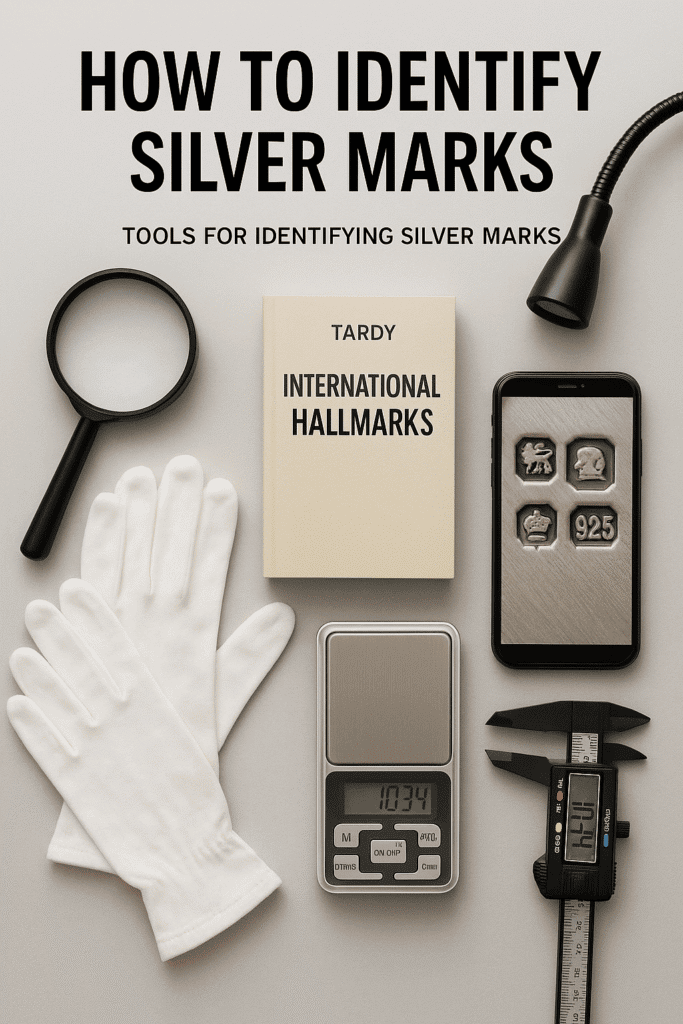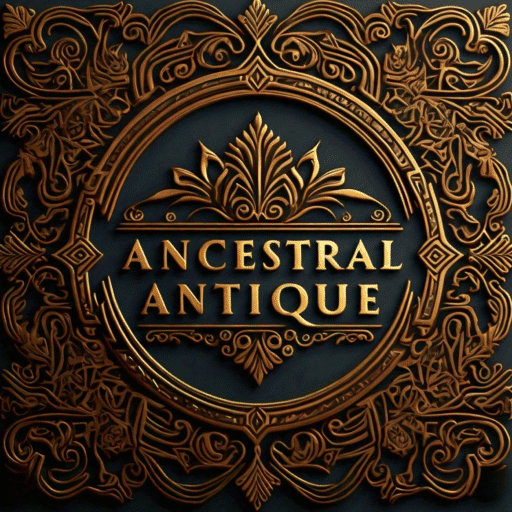Blog Details
How to Identify Silver Marks: A Complete Guide

Stanislav
- May 15, 2025
- No Responses

Introduction
Understanding silver marks is essential for collectors, antique dealers, and anyone interested in precious metals. These marks offer invaluable clues about the purity, origin, maker, and age of silver items. Accurately identifying these marks can significantly enhance a piece’s historical and financial value. This comprehensive guide will teach you how to decode these mysterious symbols with expert precision.
What Are Silver Marks?
Silver marks are stamped impressions—usually on the underside or hidden area of silver items—that serve as identifiers. These marks fall into several categories:
- Hallmarks: Official stamps certifying the purity of the silver, often regulated by a governmental body.
- Maker’s Marks: Unique symbols, initials, or logos identifying the silversmith or manufacturing company.
- Assay Marks: Indicate the official testing office (assay office) that confirmed the metal’s purity.
- Date Letters: Represent the year of manufacture using letters or symbols that follow a specific code.
- Duty Marks: Found on older British pieces, showing that a tax was paid to the Crown.
Why Silver Mark Identification Matters
Correctly interpreting silver marks has several important implications:
- Authenticity Verification: Helps distinguish between solid silver and silver-plated items.
- Monetary Valuation: Determines the item’s value based on silver content, maker reputation, and rarity.
- Historical Research: Offers insights into the period, geographic origin, and cultural context of the piece.
- Investment Security: Prevents fraudulent purchases and ensures you are investing in genuine articles.
Tools Needed to Identify Silver Marks
Having the right tools significantly improves accuracy and prevents damage to fragile items:
- Magnifying Glass or Jeweler’s Loupe
- Soft Light Source
- Hallmark Reference Book or App (e.g., Tardy’s International Hallmarks)
- Smartphone Camera
- Cotton Gloves
- Digital Scale and Calipers
Understanding Hallmarks
Hallmarks are arguably the most vital aspect of silver identification. They provide official evidence of the silver’s quality and origin. Different countries have different systems:
British Hallmarks
A full British hallmark usually includes:
- Lion Passant: Sterling silver (.925 purity)
- Town Mark:
- Leopard’s Head: London
- Anchor: Birmingham
- Crown: Sheffield
- Date Letter: Annual code in a specific style
- Maker’s Mark: Initials of the silversmith
- Duty Mark: Sovereign’s head (1784–1890)
European Hallmarks
- France: Minerva Head (1 = .950, 2 = .800)
- Germany: Numbers like 800, 835, 925
- Italy: Maker number + province code (e.g., “123 VI”)
American Marks
- Sterling: .925 silver
- Coin Silver: ~.900 purity, pre-1868
- Maker’s Marks: Tiffany & Co., Gorham, Reed & Barton
Reading Maker’s Marks
- Use hallmark books or online databases.
- Pay attention to font, shape, and context.
- Some makers changed marks over time—cross-reference carefully.
Decoding Date Letters and Symbols
- British assay offices maintain full charts.
- European systems vary—some use Roman numerals or pictographs.
- U.S. often lacks date letters; rely on style and maker info.
Distinguishing Sterling Silver from Silver Plate
- Sterling: “925”, “Sterling”, or lion passant.
- Plate: “EPNS”, “EPBM”, or unmarked.
- Test: Silver is non-magnetic; response = plated.
Common Misinterpretations
- Fake Marks: Can mimic genuine hallmarks.
- Foreign Imports: May use unfamiliar styles.
- Misread Numbers: “800” ≠ sterling.
- Misleading Names: “German Silver” = no silver.
How to Use Online Hallmark Databases
- Use sites like 925-1000.com, silvercollection.it.
- Upload images or match by shape/font.
- Ensure consistency with period/style.
Tips for Dating Antique Silver
- Compare hallmark designs across eras.
- Check for natural wear and aging.
- Use auction house archives and expert databases.
Silver Marks in Jewelry vs. Flatware
- Jewelry: Small, often hidden (bands, backs).
- Flatware: Back of handles or bowls.
Caring for Marked Silver
- Use non-abrasive polish.
- Store in tarnish-resistant fabric.
- Wear gloves to avoid oils and tarnish.
When to Consult a Professional
- Obscured or worn marks
- For insurance, resale, or verification
- For restoration and mark recovery
Conclusion
Identifying silver marks takes careful observation, patience, and research. Mastering this skill opens a doorway to understanding the history and value behind each piece. Whether you’re collecting, appraising, or simply appreciating, knowing how to read these tiny symbols is invaluable.
FAQs
1. What does the lion passant mean on silver?
It indicates that the item is sterling silver (.925 purity) in the British hallmarking system.
2. How can I tell if silver is antique?
Look for worn hallmarks, traditional maker’s marks, and styling consistent with historical periods.
3. Are all silver items marked?
No. Some older or handmade pieces may not carry any marks.
4. What does “800” mean on silver?
It means the item is made of 80% silver and 20% other metals, commonly found in European silver.
5. Where can I look up silver marks?
Websites like 925-1000.com, silvercollection.it, and Tardy’s hallmark guides are excellent resources.

At Ancestral Antiques, we take great pride in curating a thoughtfully selected collection of timeless treasures that blend history, beauty, and craftsmanship.
contact
- PO Box 326, St Albans, VIC 3021, Australia
- ancestralantiques@gmail.com
Company
Social Share
© 2025 Ancestral Antiques. All rights reserved.

Subscribe now for exclusive offers and updates!
Subscribe to our newsletter for the most recent blog posts, promotions, and updates delivered right to your inbox.